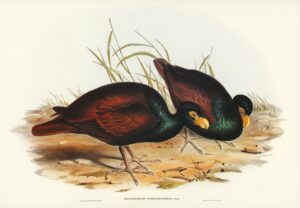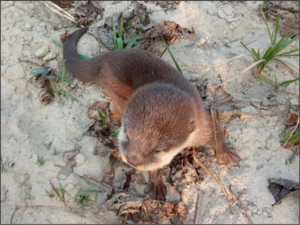Survival is a tricky game, especially if you are a tiny frog with lots of predators. Many species protect themselves with camouflage, but the Wallace flying frog’s mimicry is rather…unusual.
As adults, their bright green color merges into the leafy background. But as young frogs, they are reddish-brown with white spots. Instead of resembling leaves, they resemble, well, a small turd.
The baby frogs are the most vulnerable to predators. For a year, they sport this unappetizing red and white color before maturing into green adults. Many birds use color vision to detect frogs in the forest. The reddish color of the juvenile amphibians stands out clearly. They can’t merge into the background, so instead they masquerade as poo.
This flying frog spends its youth masquerading as poop https://t.co/e6p74jtid5
— Scientific American (@sciam) December 13, 2023
Researchers from Schoenbrunn Zoo wanted to see if their theory about this was correct, so they created hundreds of wax froglets. Some were green, others red. The 640 models were placed in the zoo’s rainforest house, which contains 150 bird predators. Significantly more red frogs were attacked than green ones.
Far fewer attacks
Then the team added white spots to the red models. The number of attacks halved.
“We show that the unusual color pattern of juveniles likely functions as a masquerade of animal droppings,” said the researchers. “Predators misidentified them as inedible objects.”

Adult Wallace flying frogs perch on a branch. Photo: Shutterstock.
As its name suggests, the Wallace flying frog glides between plants on large webbed feet to escape predators. It takes one year to develop the webbing. Since juvenile frogs cannot soar between plants, they are confined to the forest understory. It is here that the froglets hide in plain sight.

A juvenile Crater Mountain Treehole frog. Photo: Steve Richards/The Telegraph
This is not the only frog to rely on looking like excrement. Earlier this year, researchers discovered a new species of frog in Papua New Guinea. The Crater Mountain Treehole frog also has brown-white coloring that resembles bird droppings. Like the Wallace flying frog, it becomes green as an adult.
“It’s interesting that the little frog coming out looks like bird poo. What a great strategy to avoid predators,” Stephen Richards, a frog expert who helped discover the species, told the Australian Broadcasting Corporation.






